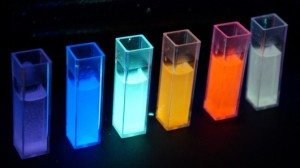Copper iodide phosphors could mean less-expensive LEDs
Everybody loves LEDs, as they're far more efficient and longer-lasting than traditional incandescent bulbs. They're also more economical to use in the long run, although they're costlier on a per-bulb basis. That price gap could soon be closing, however, as scientists have discovered a cheaper alternative to one of their most expensive ingredients.
White light-emitting LEDs use metals known as rare earth elements (REEs) for their phosphors – these are the materials that convert the light emitted from LED chips into longer wavelengths, allowing the bulbs to put out full-spectrum visible light.
The mining and processing of REEs is hazardous, however, leaving China as just about the only country currently supplying them in substantial quantities. This drives up their price, which could climb even higher as demand for LED-based technologies increases.
Led by Prof. Jing Li, a team of scientists from New Jersey's Rutgers University has now discovered that a family of materials made from relatively cheap and abundant copper iodide can be substituted for REEs. These materials are synthesized via a simple, low-cost process, which is easily scalable. Factors such as color and intensity can be tuned as needed, plus they're said to create a warmer white light than the blue-ish white emitted by LEDs currently available.
REEs may also be facing some competition from silicon phosphors, which are being developed by University of Washington spinoff company LumiSands.
-
Commercial Lighting Tampa FL, 813-935-4448 / 813-514-1264 / 813-514-1265 / 813-932-1086 / 813-932-1547 / 813-935-8235
CommercialLightingTampa.com, 8139354448 / 8135141264 / 8135141265 / 8139321086 / 8139321547 / 8139358235
Call Us Today!
813-514-1266
813-935-4448
8135141266
8139354448

